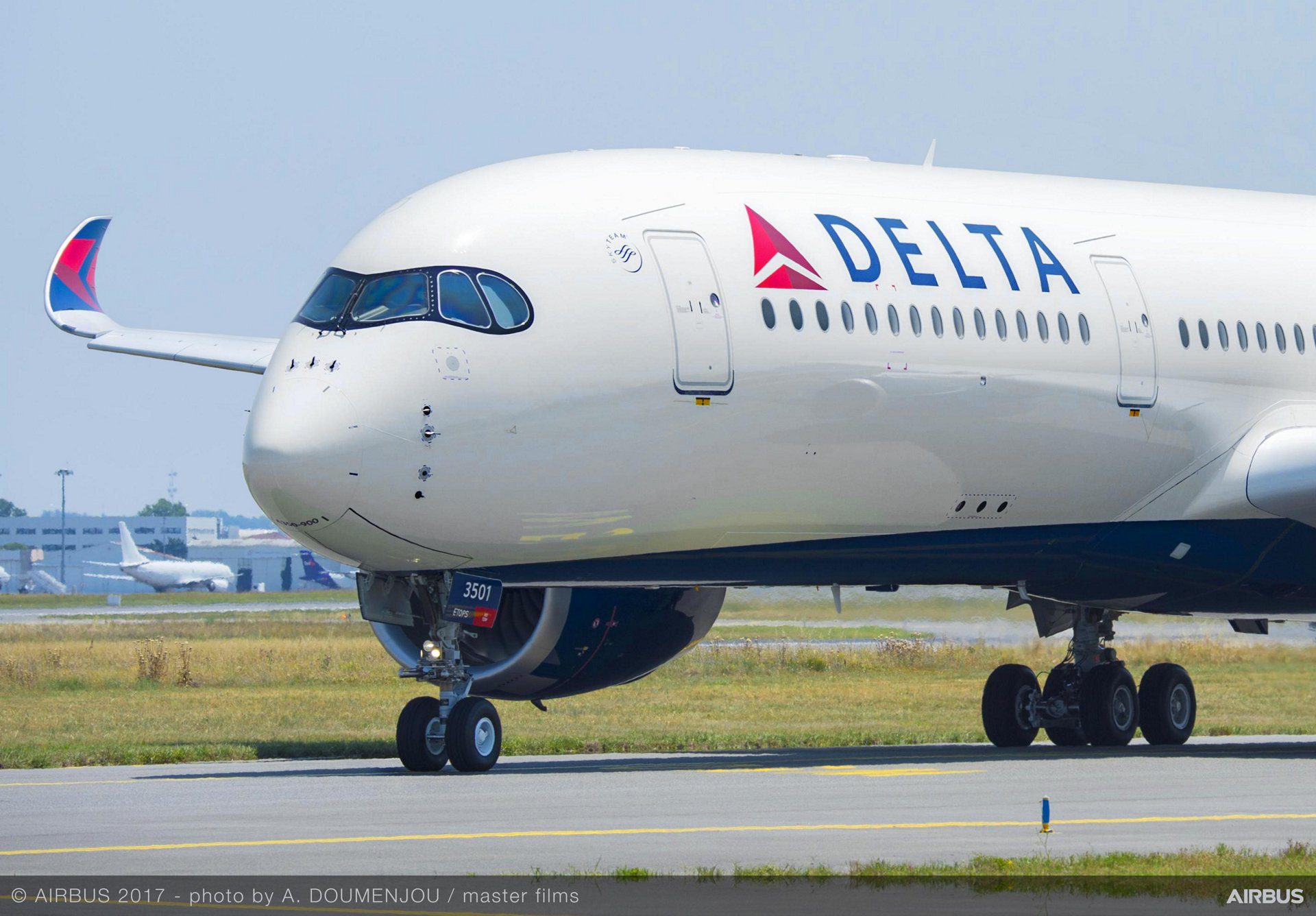
AirbusA350 Delta
As US airlines race to prepare for returning traffic, there is a scramble for capacity. It is the nature of this business that one has to always have extra capacity to deploy quickly. When an opportunity appears, first-mover advantage is crucial. In an oligopoly (and game theory) the three big US network carriers cannot compete on pricing as that becomes a no-win instantly. The way to compete is on costs – the lowest cost producer wins. US airlines and the wide-body cost challenge
By having the lowest costs with a given market pricing, an airline gains the most flexibility from better than average profits. These profits buy the flexibility to push higher-cost producers into an even less favorable situation. look at what Ryanair in the EU and Southwest in the US have been able to do to their competitors.
International markets opening up allow the big three to flex muscles that have been almost dormant for a year. What is interesting is to see how each of these airlines aligns their overseas fleets. United is buying new, and without a doubt, its smartest move for long hauls has been the 787-10. The chart below (including Hawaiian) explains why. The ball size is RPMs and we see that the 767 and 777-200 remain highly significant for the big three.
Aircraft above the dotted horizontal line are operating at higher than average costs per seat hour. Each dotted line is an average for that metric. The 767-300 and A330-200 are clearly less attractive and those that have been parked in the desert may well stay there. Unless the operator desperately needs capacity in short order. So, for example, if American cannot get any new 787s because of delivery delays it may have to recommission some of its parked A330-200s.
It is interesting to see divergent strategies being taken by Delta and United. Delta is playing the game it has always played, finding deals on used aircraft it can secure at low cost and optimally operate. United has gone the other way and prefers buying new. American also selected to buy new 787s.
American and United had no way of knowing that Boeing would run into 787 delivery challenges when they placed their orders, while Delta benefitted from buying Airbus which has had no delivery issues on A350s or A330neos. We have not seen American and United secure any used 787s – operators like these aircraft and hold on to them. For example, LATAM let its A350s go but not its 787s. Delta picked up the LATAM A350s and Lufthansa has picked up the Philippines A350s.
The chart above shows the 787-10 as the lowest cost aircraft (operating costs from Form 41 Table 5.2) listed and it is clearly the most attractive among the group it is grouped with. But the difference in seat/hour costs is marginal among them. The 767-400 is at $22.91, the A330-300 is at $21.43 and the 787-10 is at $19.54. Nevertheless, we expect United to acquire more 787-10s as they retire 777-200s. It is a logical choice for them.
Looking at the A330-900, we have a seat/hour cost of $22.43 but a range improvement of 24.5% over the A330-300. The A350-900 has a seat/hour cost of $22.81 and a range improvement of 34.8% over the 777-200. Both Airbus aircraft mentioned here are Delta operated and the data sources do not allow us to get to a granular level showing the different 777-200 types. For example, allowing us to compare Delta’s 777-200LRs with the A350-900. So we have something of a cocktail on 777-200 costs and the data is biased towards 777-200ERs.
Another interesting item is the four aircraft on the right of the chart. The 787-9 and A330-900 compete directly, with the A330-900 at $22.43 per seat/hour compared to the 787-9 at $25.86. The A350-900 is at $22.81 compared to the 777-300ER’s $26.03 for seat/hour costs.
It appears, from this data view, Delta has three advantages: first, it is not a 787 operator and second, its A330-900 and A350-900 are highly effective, and third, Delta has secured used A350s in a market that strongly favors the buyer. Other than the 787-10, which Delta does not operate, Delta appears to be placed well as the low-cost seat producer. How do you see this?
Views: 106






No doubt the 787-10 has low seat mile costs, it’s mostly rows added to the 787-9. It pays a price though in payload-range. Very useful on the Atlantic, less so on the Pacific.
100% agreed. The 787-10 seems to be an excellent replacement for the 777-200.